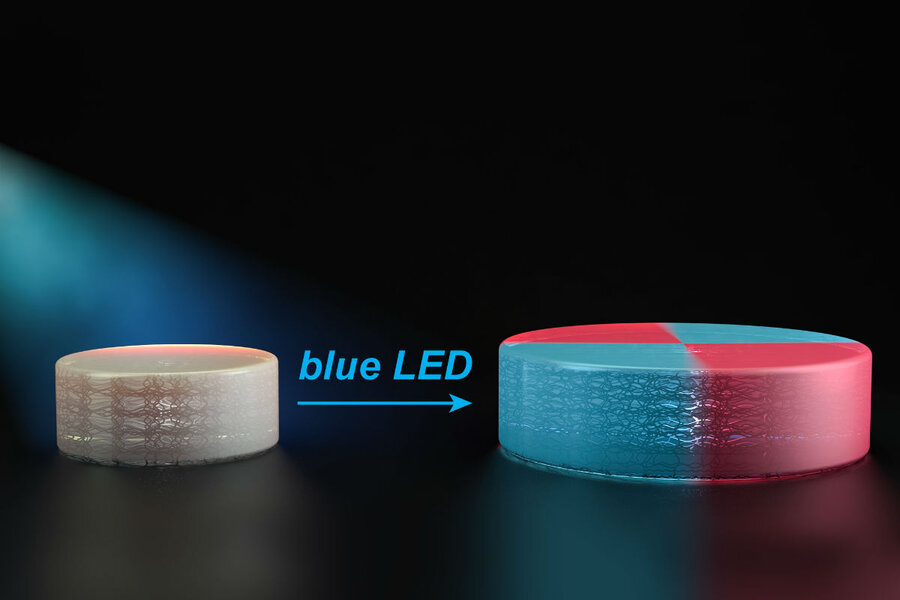MIT develops 3-D printing 'undo' option
Loading...
Technologists claim 3-D printing can do for objects what the printing press did for books, but the revolution lags the hype. Now, a new technique from MIT could provide a push in the right direction.
It’s not hard to see the allure. How would you like the ability to print a color-matched replacement button for your favorite jacket, or a perfectly sized wrench? What about a new creative outlet for digital sculpture or self-portrait action figures? Beyond consumer knickknacks, applications range from artificial food to Martian habitats. Unfortunately for enthusiasts, expensive and hard-to-use units have kept the technology from becoming a mass-market hit, despite finding a niche in rapid prototyping.
One obstacle to the widespread adoption of 3-D printing is its finality: after printing, an object’s shape and characteristics might as well be set in stone. A research team from MIT is trying to change that with a new technique that allows printed material to be modified after the fact. According to a paper published Friday in ACS Central Science, they’ve succeeded in developing a special type of polymer that light can re-activate over and over, even after hardening. If it pans out, future 3-D printers could be to today’s units what the word processor is to the typewriter.
Everyone knows the pain of noticing a typo right after hitting "print," but imagine if each page uses a few dollars worth of ink and requires hours to print. To make matters worse, 3-D printers can fail spectacularly if the head is misaligned or loses track of its location in space.
But someday soon, these slips may be fixable. MIT chemistry professor Jeremiah Johnson explains the potential for his team’s new technique in an email to The Christian Science Monitor:
I imagine using traditional 3-D printing using our polymers to fabricate a material, and then realizing some dimension is not perfect or that something about the properties should be slightly different. Our method could then be used to make precision modifications afterwards to optimize the properties of the printed object without having to re-print it.
Their secret? They harness the power of light, and a lot of chemistry.
While many printers work by laying down successive layers of plastic, Dr. Johnson’s method is more closely related to another popular technique called stereolithography. This type relies on ultraviolet light to harden liquid resin, permitting faster build times and more precise sculpting.
Johnson’s team calls their process "living additive manufacturing," in contrast with the "dead" or inert pieces produced by standard 3-D printing. The trick is the use of a new material containing chemical groups known as TTCs – triphenyl tetrazolium chloride – which feature a crinkly molecular structure. When blue LED light hits the substance, it triggers a chain of events that ends with that structure unfolding, and voila: a “living gel” that can change form, bond with different parts, or perform other tricks, such as responding to temperature or water.
And it isn’t just a one time deal. In theory the gels can be activated any number of times, although in practice there are some "irreversible side reactions over time." Nevertheless, Johnson tells the Monitor, the team has "not come close to a limit yet," despite activating some samples as many as five or six times. Indecisive model builders of the future, rejoice!
But there’s a lot more work to be done, he cautions.
"This proof-of-concept work only hints at the potential of living additive manufacturing," his team wrote in their paper. Next, they want to make it 10 times faster and more flexible, as the current implementation requires an oxygen-free environment.
Jennifer Lewis, head of a 3-D printing group at Harvard not involved with this paper, calls the work "clever," and sees applications in tissue engineering and drug delivery, but she also raises another drawback. The material must be transparent to allow the LED light to work its magic, which may “limit its broader applicability to other classes of materials,” she tells the Monitor in an email.
Johnson agrees, but points out that the process isn’t necessarily limited to visible light. It would theoretically work in the near infrared, for example, to which many materials are transparent, including humans. Additionally, this bug could actually be a feature in cases where the user is interested in changing only the surface, while keeping the main shape intact.
For now, one of the most attractive prospects for the technology is its ability to overcome another weakness of current 3-D printers: size. “The fabricated parts can can be welded to other parts to build more complex structures. Due to the unique chemistry, the interface of the welded objects is seamless,” Johnson explains. The size of printers on the market today physically limits what they can produce, but this development may let builders literally think outside the box.
Another potentially interested party? NASA. It’s expensive to ship stuff into space, and material wasted on misprints is even more costly than on Earth. Could the MIT team’s technique be used to fix space wrenches in the future? Johnson hadn’t considered it, but calls it "a really interesting idea."
While the technology is still in its early stages, Johnson thinks the development represents a step forward in our ability to control materials.
"That’s the breakthrough in this paper," he said. "We really have a truly living method where we can take macroscopic materials and grow them in the way we want to."








